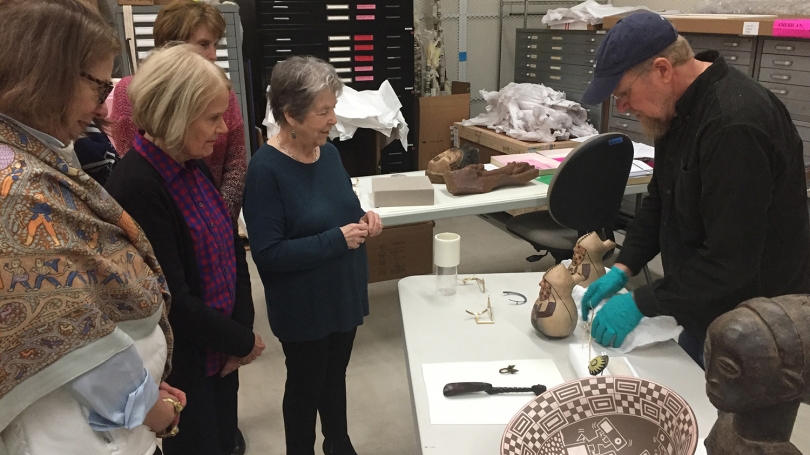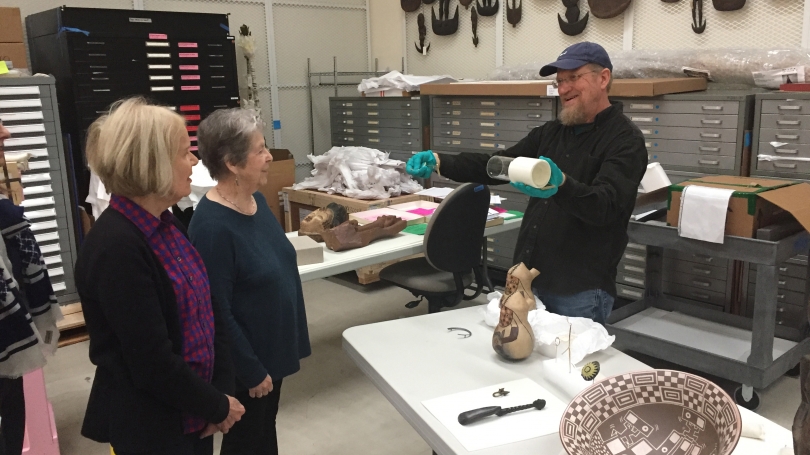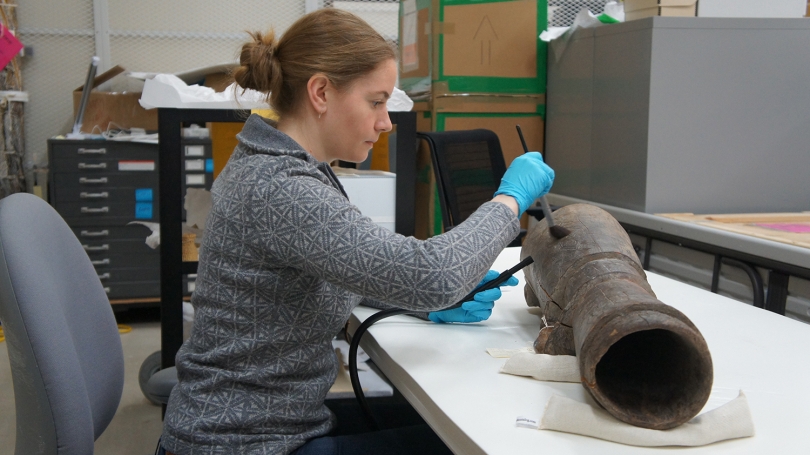Behind the Scenes
On a recent spring morning, our docents took a break from learning about reinstallation plans and dropped in on Lead Preparator John Reynolds to hear about mount making. No one leaves a museum babbling about the ingenuity of the mounts, but after seeing John's artful mounts, maybe they should. The best mounts disappear, leaving the art to float with unseen assistance. The mounts we saw that morning, lying in wait until installation begins, looked like small sculptures that deserved their own mounts. Some were hinged and operational, made to expand and contract depending on preferred views. Others were sanded, then wrapped in materials to protect an object, and still others were painted to remain unnoticed, perfectly camouflaged as outside support. Each had presence. With care, precision, and the mastery that comes from years of problem solving in three dimensions, John makes mounts worthy of a closer look.
Conservation
As builders laid bricks to create the new Hood Museum of Art façade, museum staff exercised great care and attention in preparing the art and objects that would soon be gathered behind those walls. To make sure all objects were ready for display, the Hood's team of registrars, preparators, and curators talked about each object, its condition, and what it needed to be installed safely and securely. Among the over four hundred objects returning to sixteen galleries in the museum—many of them displayed for the first time or after a long period of rest—some would need extra care prior to installation. Although much of the object preparation was done in house, staff from the Williamstown Art Conservation Center assisted with those objects requiring expert care. With backgrounds in object and textile conservation, Annika Cilke and Hélène Gillette-Woodard traveled to the Hood's storage facility to work with a variety of objects, including nineteenth-century sculpture, Native American textiles, and carved drums from Papua New Guinea. Working closely with the conservators also allowed Hood staff to consult on suitable installation methods, factoring in elements like size, configuration, medium, and the fragility of the objects or works of art. With so many pieces in the collection needing customized attention, preparation quickly became a large endeavor. However, it was an essential element of the overall installation plan, which is rooted in the responsibility of caring for and maintaining the Hood's collection for future generations.



